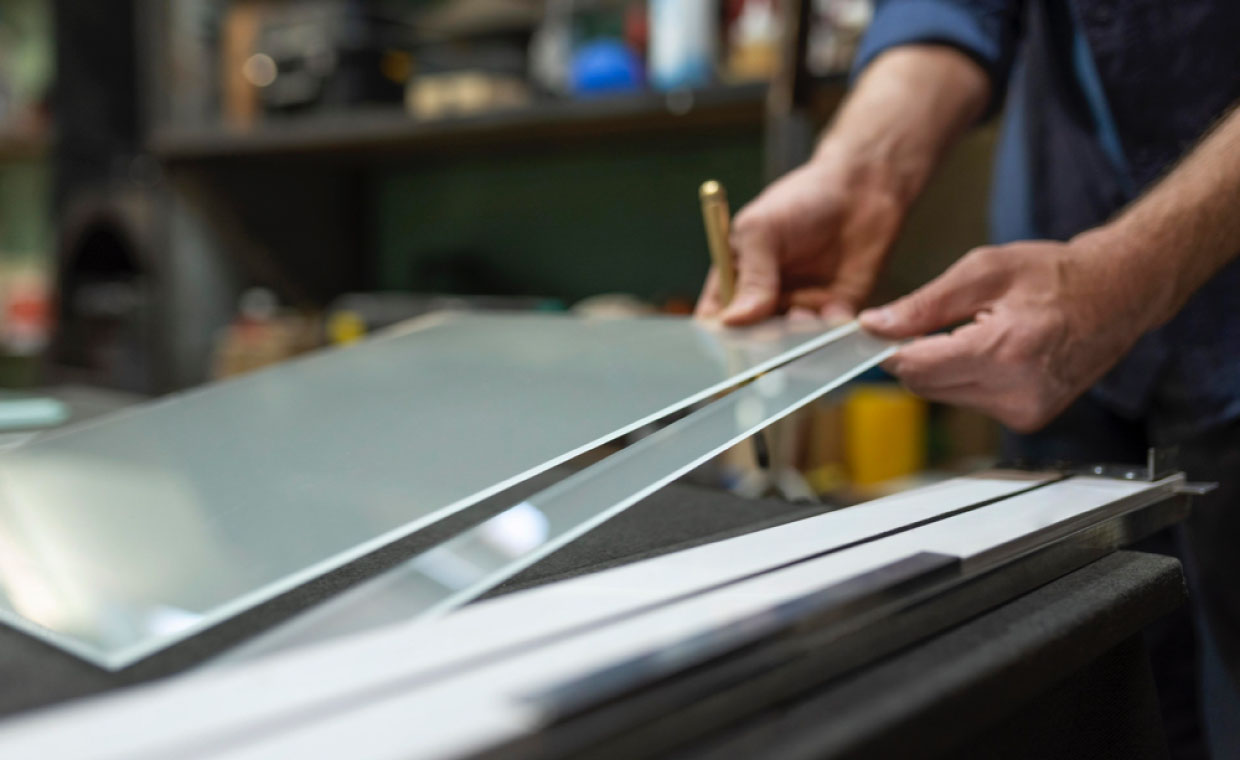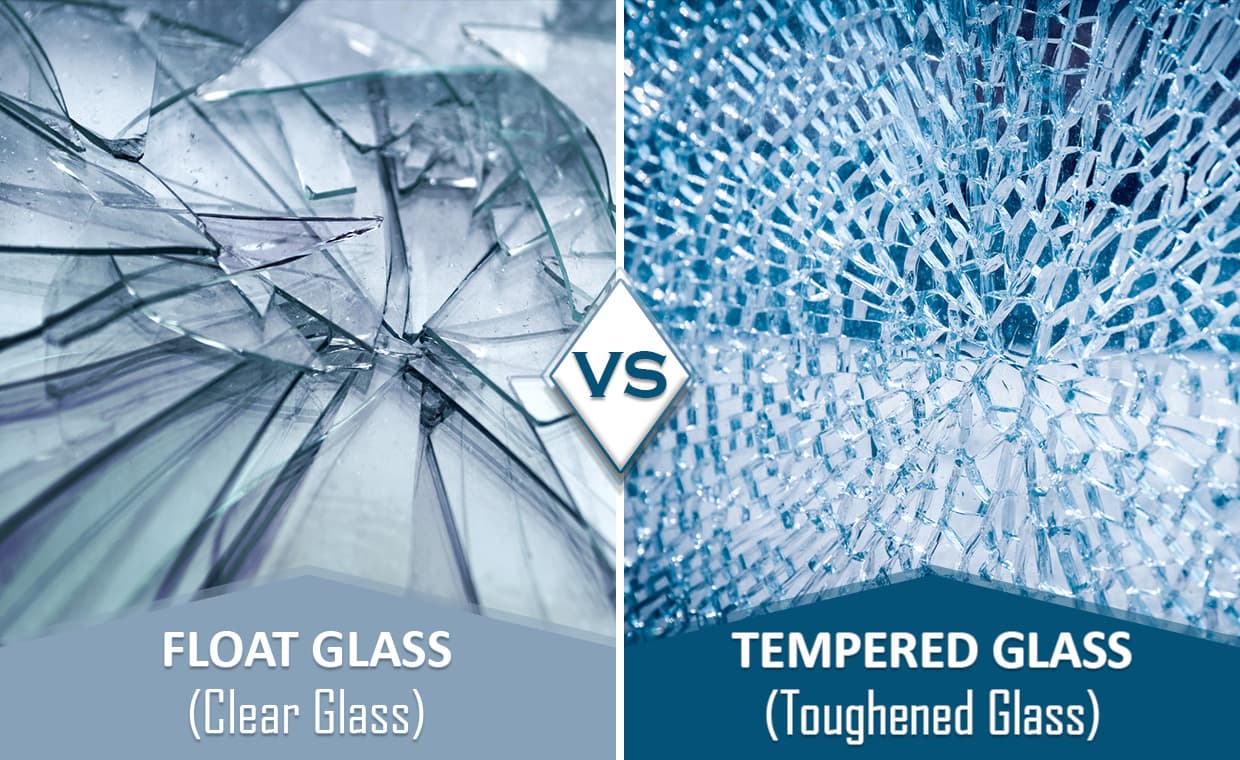
The built exterior or interior environment plays a crucial role in establishing meaning in people’s lives. It contributes to people’s emotions, the physical comfort of being, general well-being and sense of belonging.
Designers see things from diverse perspectives due to their knowledge. They provide individual attention to all the small details as well. It is a progression that offers its consumers with a set of aesthetically enjoyable but proficient solutions for better use of the space in question. There are more than a few challenges that make interior design an action developed by specialized in the field. It is a way to change the lives of people who subsist or take pleasure in a specific space, humanizing their quality of life through decoration and design.
According to ‘Christopher Gorse’, ‘David Johnston’ and ‘Martin Pritchard’ (Author of Oxford Dictionary of Construction, Surveying & Civil Engineering), Glass is a transparent inorganic material based on silica, used primarily in construction for glazing application. Different types of glass are designed to fulfill different requirements based on their properties like how much solar control they have, how strong they are, and whether they are better for sound insulation or not. The type that fits your requirements best would be the best type of glass for you.
Different processes are carried out on glass, to make it more flexible for various applications. Float glass is a transparent glass also known as Clear glass, Normal glass, Ordinary glass or Flat glass. Tempered glass which is also known as Toughened glass, is a popular type of processed glass. So, there is confusion as to how Float glass and Tempered Glass (Toughened Glass) are differ? Here we have tried to give brief information on float glass vs tempered glass.
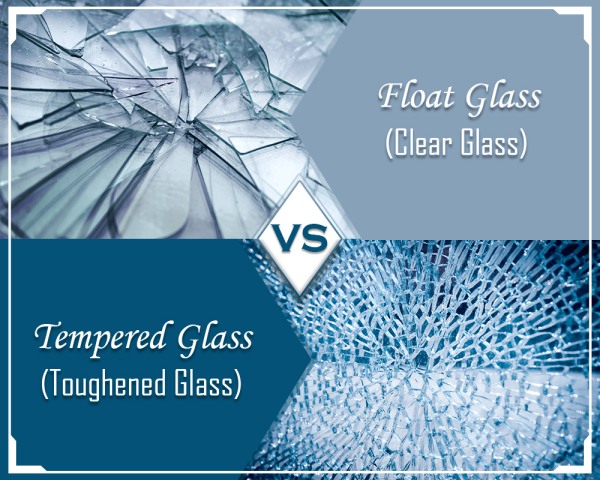
Difference between Float Glass and Tempered Glass
01. Definition
Float Glass (Clear Glass)
- Float glass has a perfectly flat and transparent surface. The float glass gives no shadowing effect and can unite you naturally with the surrounding environment.
- It is made by float process and has a high precision of flatness (smooth surface) and fine transmission.
Tempered Glass (Toughened Glass)
- Tempered Glass is a type of glass processed by controlled thermal or chemical treatments on float glass to increase strength. The tempering process on float glass does not alter the light transmission and solar radiant heat properties of glass.
02. Other Names
Float Glass (Clear Glass)
- Clear Glass
- Normal Glass
- Ordinary Glass
- Flat Glass
Tempered Glass (Toughened Glass)
- Toughened Glass
- Safety Glass
03. Uses of Glass in Interior Design
Glass offers near never-ending impending in transforming a space both aesthetically and practically. The use of glass plays an integral part in interior design too. The best interior designers work perfectly with architectural glass installations and know how to smack a harmony between their perceptions and the glazing at their removal.
Float Glass (Clear Glass)
(a) Float Glass is used as exterior and interior material for residential houses, public buildings, offices, shopping malls, skyscrapers etc. i.e. Windows, doors, shop fronts, shelves etc.

(b) The table is a piece of furniture with a flat top supported by legs for eating, writing or working etc. Mostly Float Glass is used for the formation of tabletop. For More details about it, please refer: Glass Table Top
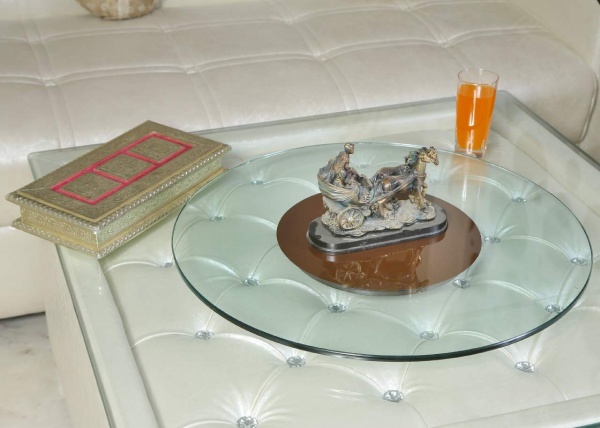
(c) Float glass is used for partitions. Partition means a light wall or other space dividing into parts or internal wall used to separate one area from another.

(d) Float glass is also used in buildings, aquariums, museums, shopping malls, hotels and restaurants as a Curtain Wall.
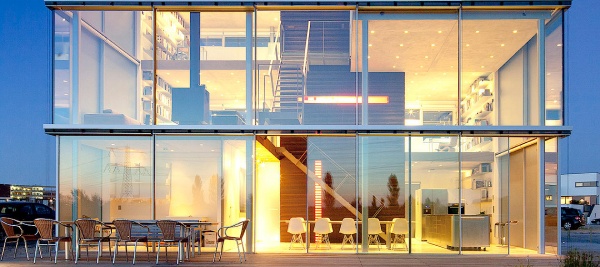
Tempered Glass (Toughened Glass)
(a) Tempered glass also called toughened glass can be used in staircase, balustrades, escalator side panels, handrails etc.
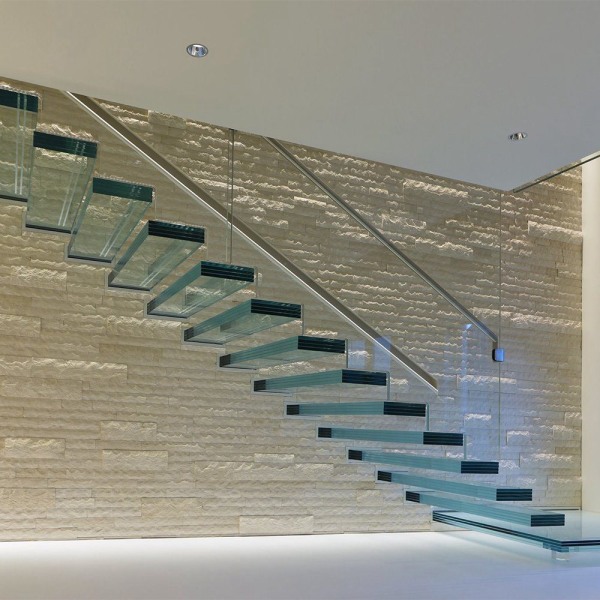
(b) The tempered glass is used for sliding or swing doors and window.

(c) Tempered glass is used for partitions of home, sports complexes, resorts, airports and offices etc.
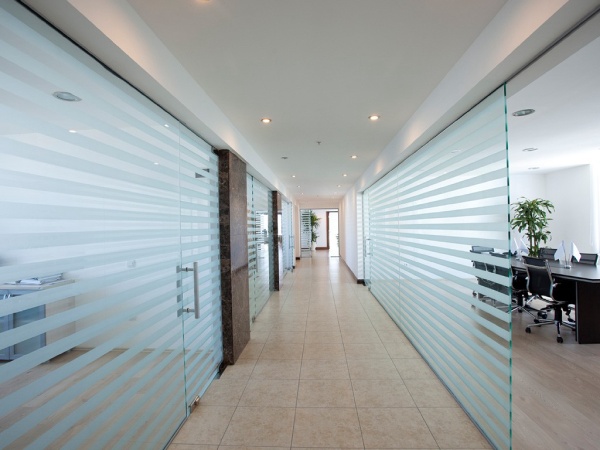
(d) Tempered glass is used as a Decorative Panelling.
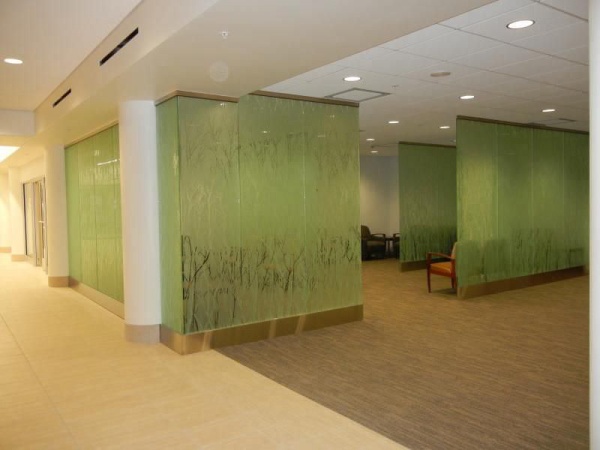
(e) Tempered glass is also used as a facade. According to ‘Dudley McFarquhar’ (Author of The Role of the Building Façade – Curtain Wall), The facade is an elegant component that helps to define the unique architectural aesthetics of the building. Also, it has a critical role related to energy performance and interior function of the building.

04. Properties
(a) Breakage Pattern
Float Glass (Clear Glass)
- Upon impact float glass breaks into large sharp pieces. These pieces can cause injuries to people; hence float glass is not used as safety glass.
Tempered Glass (Toughened Glass)
- Toughened glass breaks into small blunt pieces, which are not harmful. Thus, it is widely used as a safety glass.
(b) Impact Resistance
Float Glass (Clear Glass)
- The use of float glass provides a less impact resistance. The ability of the glass to endure and hold up an immediately functional load is very pitiable. This type of glass does not withstand high temperatures.
Tempered Glass (Toughened Glass)
- The use of Tempered glass provides a more impact resistance than float glass. So, this type of glass can easily resist high temperatures.
(c) Versatility in Design
Float Glass (Clear Glass)
- The float glass must be used with proper care and consideration. It is used in limited applications. The reason is that one can easily break it and is dangerous for health.
Tempered Glass (Toughened Glass)
- Tempered glass can be used easily in different unique and creative applications.
(d) Strength
Float Glass (Clear Glass)
- Float Glass has less mechanical strength as compared to toughened glass.
Tempered Glass (Toughened Glass)
- According to ‘Arthur Lyons’ (Author of Materials for Architects and Builders), Toughened glass is four to five times stronger than float glass. Hence it can sustain high wind load or snow load easily.
(e) Fabrication
Float Glass (Clear Glass)
- Float glass can be processed to form different types of glass. Different fabrication processes such as cutting, drilling, polishing, etc. can be easily carried out on it.
Tempered Glass (Toughened Glass)
- Tempered glass cannot be cut or re-sized. All the fabrication processes have to be done before tempering of glass panels.
(f) Optical Distortion
Float Glass (Clear Glass)
- Float glass is free from any type of optical distortions and thus provides a clear vision.
Tempered Glass (Toughened Glass)
- Due to tempering, there are some optical distortions on the surface of the glass, which provide a little hazy and unclear vision.
05. Manufacturing Process
Float Glass (Clear Glass)
- The raw materials are melted in a furnace to form molten glass. The molten glass is then passed through the temperature-controlled kiln (annealing lehr) for cooling the glass. In annealing lehr, float glass cools gradually and comes out with uniform thickness and flat surface.
Tempered Glass (Toughened Glass)
- The normal glass or float is heated in the furnace to a uniform temperature of 7000C and then rapidly cooled in the annealing lehr to produce tempered glass.
06. Maintenance
Float Glass (Clear Glass)
- Maintaining a float glass is quite hard as compared to tempered glass. Proper maintenance is very important to keep and maintain the shape of the item. Keep on checking your glass material from the time to time and take all the necessary steps to maintain its uniqueness and beauty.
Tempered Glass (Toughened Glass)
- Maintaining a tempered glass is easy as compared to float glass.
07. Cost
Float Glass (Clear Glass)
- Float glass is less expensive as compared to toughened glass.
Tempered Glass (Toughened Glass)
- Tempered glass is more expensive than float glass.
Summing Up, Interior design is a multi-faceted profession in which creative and technical solutions are applied within a home to achieve a built interior environment. These solutions enhance the quality of life, and are aesthetically attractive.
Glass as a building material has many advantages & Disadvantages. The glass is available in various finishes and colors and what glass should be used in a room depends on the desired design effects and spatial possibilities. The use of glass in interior design provides an elegant look to home or workplace. Different types of glass are available in the market, which is used for interior designing.
Float glass is a versatile construction material capable of many functions like glazing, lighting, solar protection, insulation, decoration etc. and most widely used glass in doors and windows. The tempered glass is preferred in an area where safety glass is required to assure greater strength and can be used in glass balustrades, escalator side panels, handrails, sliding or swing doors, showcases, partitions, automobiles, furniture and decorations etc.
From the above comparison of float glass vs tempered glass, the user needs to make a judicial choice. The selection of the right kind of glass in the interior of your office or home is not difficult. There are many factors which should be observed properly. In case you find it hard to decide something on your own, then take suggestions and opinions from other people or your designer. Look for different options online, check out the reviews of different people and then make a decision.
Also Read:
Different Types of Glass Based on Principal Constituents
Tinted Glass: Add Colours To Your House!
Frosted Glass: for Private and Prettifying Interiors!
Image Courtesy: Image 1 (a), Image 1 (b), Image 3, Image 5


